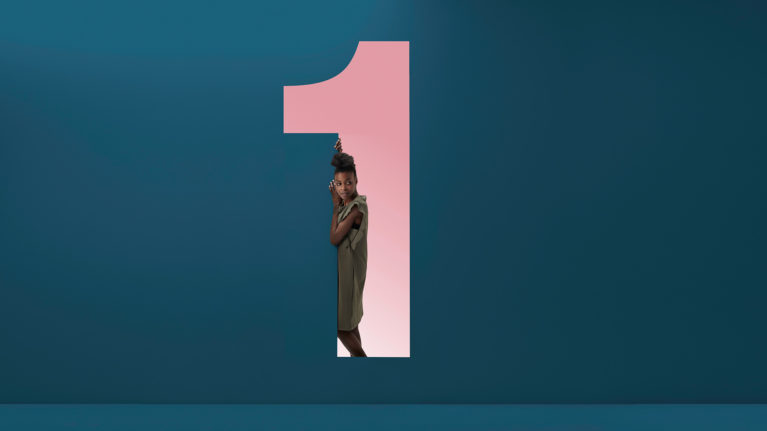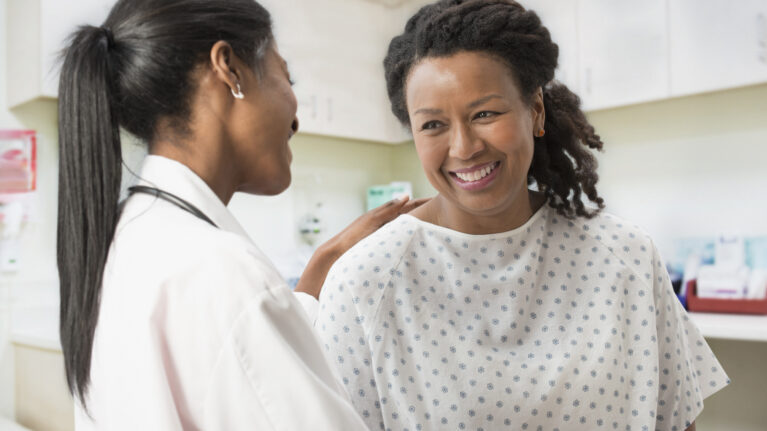Need to know – My First Mammogram

Are you in your 40s, 30s, or even 20s and wondering what your first mammogram might be like? Looking to describe the process to a daughter or friend who is preparing for their appointment? Read on and we’ll break it down step-by-step.
Annual mammograms can detect cancers in their earliest stages when they are typically easier to treat and because of that, they are our best tool in the fight against breast cancer. You may be nervous for your first exam—and that’s normal— but you should leave feeling confident knowing that you’re taking control of your health.
Below are some tips to help you or your loved one prepare for your first 3D™ mammogram.
When to Start Screening?
Women of average risk begin annual breast cancer screening at age 40, but you should discuss with your care provider any possible breast cancer risk factors to determine the best age for you to begin screening as it may be earlier. That’s because things like a family history of breast cancer or genetics may require you to start getting mammograms before the age of 40.1 So, know your risk factors and undergo a risk assessment so you can feel empowered to create the best screening plan for you.
Before Your Mammogram
If your mammography appointment is right around the corner, you can get screened first and vaccinated right after. An alternative is to wait four to six weeks following your second dose or booster shot of the COVID-19 vaccine before having your breast exam.2
It’s time to schedule your first mammogram. Now what? If possible, schedule your exam at a facility that specializes in breast imaging. Your doctor should be able to recommend a few local options, or you can find a list of facilities near you, here. Try to schedule your mammogram when your breasts are not tender as the compression during a mammogram can be uncomfortable for some women. You know your body best, but for many women, breast tenderness occurs the week before or during their period.
During Your Exam
It’s the big day – you wake up feeling nervous but empowered. Remember that you’ll have to remove your top and bra for the exam so you may opt for a two-piece outfit. Think pants or a skirt, but don’t worry if you’re wearing a dress, the facility will provide a robe that opens in the front for you to wear during the exam. Most importantly, avoid wearing any deodorant, antiperspirant, lotions or perfume as some may have substances that can show up on the exam as white spots.3 Don’t worry, you can apply it after your mammogram if needed.
The exam itself is relatively short — about 10 minutes in total. A technologist, specially trained in Mammography will conduct the exam. Most mammography technologists are women and will gently get you into position, uncovering one breast at a time to take two images with the mammography device . One image is from top to bottom of the breast (CC) and the other from side to side (MLO). This gives the radiologist (a specialized physician) the best images to review your mammogram. Your breasts will likely be compressed four times in total, for four seconds each time at a few different positions and angles.3 You may feel some discomfort, which is normal. Speak up if you have any concerns during the mammogram and don’t be afraid to ask your technologist to talk you through what is happening during the exam. Remember, knowledge is power so knowing what is happening will put you at ease and make you more comfortable.
When the Party is Over
You did it! A radiologist will read the images after your mammogram— sometimes the radiologist reading happens immediately after the exam while you are in the facility. More often the reading is after you leave. Most women will receive their results within a few days either by phone or in the mail, the facility will let you know their process. If you haven’t heard from your doctor or the facility where the mammogram was done within 10 days, give them a call. You will also receive a summary of your results and a notice of your breast density in the mail within 30 days.4
It’s never too early to start thinking about next year so while you’re at the office, go ahead and schedule next year’s mammogram. Going to the same clinic every year is best so that your results from previous exams can be compared with ease.
[Disclaimers] The content in this piece is for information purposes only and is not intended to be medical advice. Please contact your medical professional for specific advice regarding your health and treatment. This information may be relevant in the U.S. and other markets and is not intended as a product solicitation or promotion where such activities are prohibited. Because Hologic materials are distributed through websites, eBroadcasts and tradeshows, it is not always possible to control where such materials appear. For specific information on what products may be available in a particular country, please write to womenshealth@hologic.com.
SOM-01193
-
1 Monticciolo, D. L., Malak, S. F., Friedewald, S. M., Eby, P. R., Newell, M. S., Moy, L., Destounis, S., Leung, J. W. T., Hendrick, R. E., & Smetherman, D. (2021). Breast cancer SCREENING Recommendations inclusive of all women at Average Risk: Update from the ACR and Society of breast imaging. Journal of the American College of Radiology June 18, 2021.
https://www.jacr.org/article/S1546-1440(21)00383-5/fulltext#secsectitle0010.2 COVID-19 Vaccine: Can It Affect Your Mammogram Results? HopkinsMedecine.org:
https://www.hopkinsmedicine.org/health/conditions-and-diseases/coronavirus/covid19-vaccine-can-it-affect-your-mammogram-results. Accessed February 4, 20223 Breast cancer mammogram: How does a mammogram work? American Cancer Society. (n.d.). Retrieved March 21, 2022, from https://www.cancer.org/cancer/breast-cancer/screening-tests-and-early-detection/mammograms/mammogram-basics.html
4 Getting your test results. Breastcancer.org. (2016, June 23). Retrieved December 13, 2021, from https://www.breastcancer.org/symptoms/testing/results_records/get_results.
Hologic, Genius, The Science of Sure, and associated logos are trademarks and/or registered trademarks of Hologic, Inc. and/or its subsidiaries in the United States and/or other countries.


